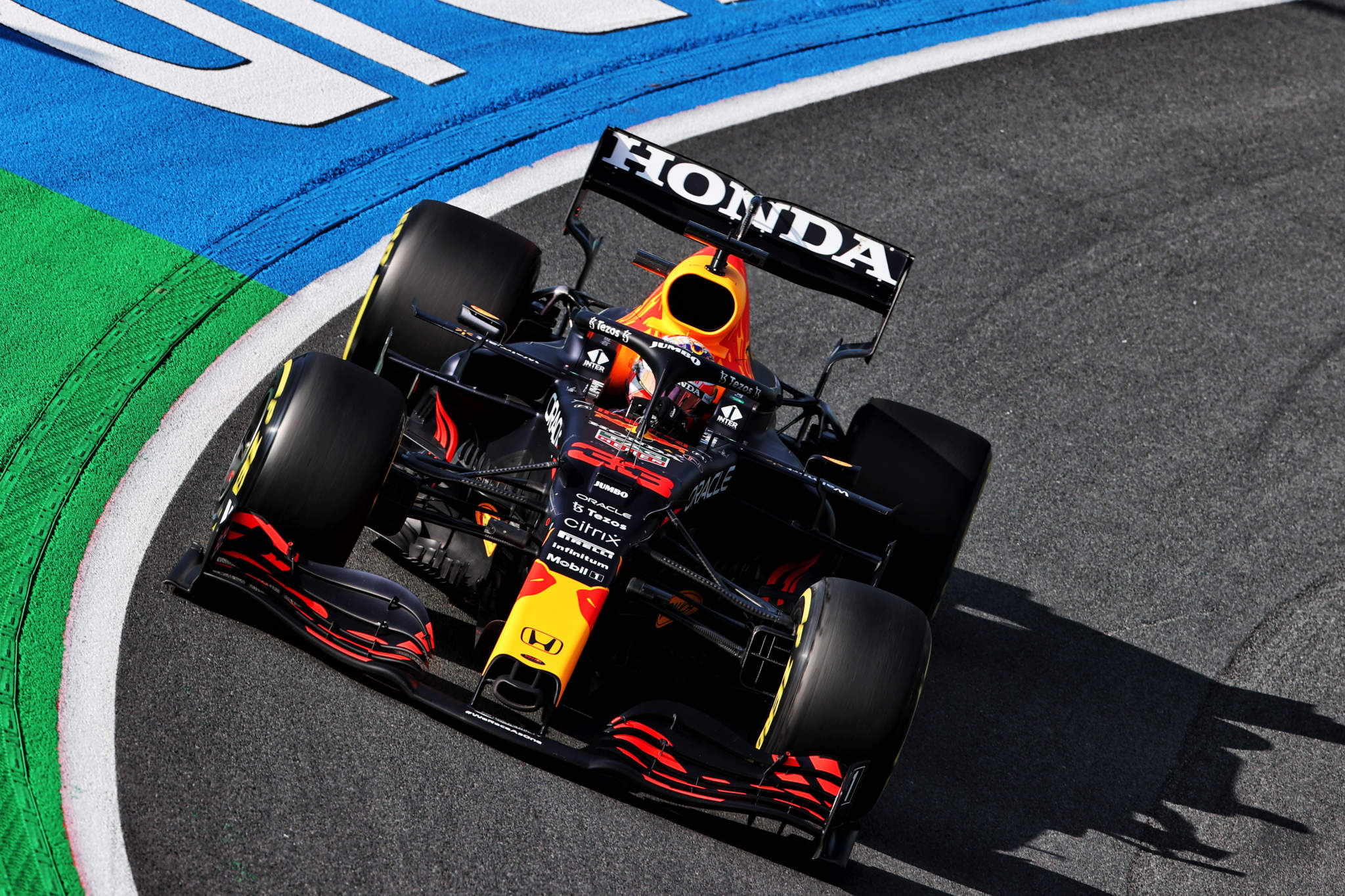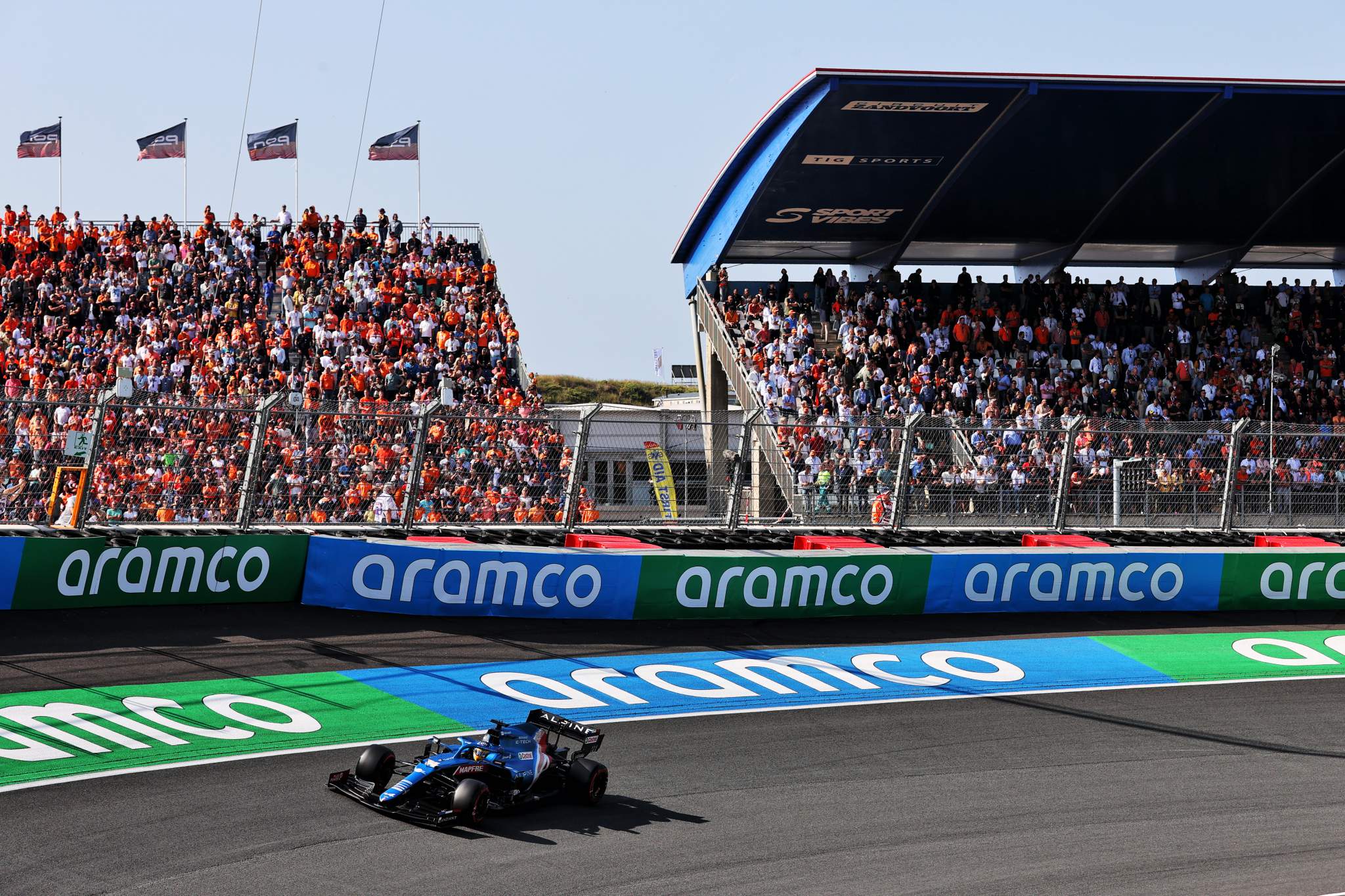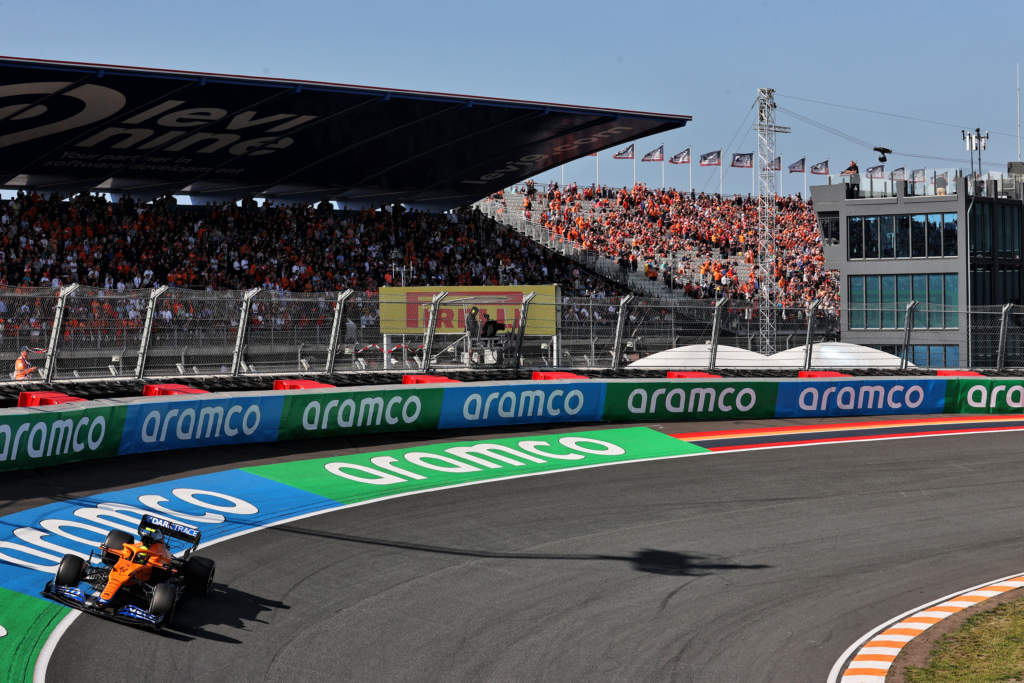Up Next

Television doesn’t do justice to the Turn 3 banking at Zandvoort, placing it alongside legendary turns like Eau Rouge/Raidillon and the Senna S at Interlagos for corners that must be seen up close to be believed.
Even before the cars are released for the delayed (by five minutes) start of FP1, it’s impressive. The steepness of the banking that means you are looking down on the track and the steep rise to the exit of the corner and over the brow telegraph that this is going to be a very different kind of trackside experience.
But nothing can prepare you for the moment Max Verstappen barrels into the corner, obviously carrying far too much speed to avoid keeping it out of the SAFER barrier in the middle of the corner.

You brace yourself for the expensive crunch of carbonfibre just below you, only to see Verstappen wind on the lock, the car pivot in a moment and – with a slight squirm of the rear end as the tyres scrabble for grip – launch off towards the exit.
This is Verstappen’s favoured approach and it works for him. Unlike a conventional corner, where you pick out an apex that is often roughly mid-corner, this is almost the inverse.
It’s a ‘wall of death’ approach, just with a more sharp point where he yanks the car round at the point his car meets the outside of the corner. Initially, this point comes a little earlier in the corner, but soon he arrows into a slightly later one that works beautifully.
It’s an approach that many cars couldn’t handle given the way the load shifts, but is also demanding of the driver. That’s clear given Sergio Perez appears to take a toned-down version of the same approach. Neat, tidy but just not as quick – and certainly not as impressive to watch.
Because of the banking, there is no standard line through here. The only time you see a car near the orthodox apex as it would be for a flat corner is when they are ducking inside another that’s on a cooldown lap. For the rest, it’s mid-track or at the top.
Except for probably the most creative of drivers, Fernando Alonso. He also favours the ‘wall of death’ approach but with a more gentle approach line given the Alpine doesn’t respond well to his more aggressive approach early on.
Increasingly, he also places the right-side of his car outside the white line to gather every iota of assistance to slingshot his way round the corner. The Alpine might not be able to hack the shorter rotation of the Red Bull, but Alonso’s way also looked effective. Team-mate Esteban Ocon also adopted this approach as the session progressed.

There was a line for all tastes. Alfa Romeo drivers Kimi Raikkonen and Antonio Giovinazzi often favoured a slightly tighter version of the Alpine line, with Williams pairing Nicholas Latifi and George Russell just inside of that line. Interestingly, as the session progresses Russell moves increasingly to the Verstappen approach.
Mercedes pairing Lewis Hamilton and Valtteri Bottas opt to rotate the car more at corner entry, holding a more middling position on the banking mid corner then using the space on the outside to launch off the corner. Later, Bottas goes to a wide line as he works through the long runs, by which time Hamilton has long since disappeared with an engine problem.
The Aston Martins, particularly Sebastian Vettel, take a more extreme version of this and get the car in tighter for the entry then use the space at the exit to the point where they are effectively running a version of the corner that’s offset.
But what is really striking is the savagery of the banking on the cars. You can hear the T-Tray hitting the track in the middle of the corner. For those such as Lando Norris early in the session, who are a car’s width inside the white line in the middle of the corner the right-side endplate sparks off the ground.
That leads to some adjustments for Norris, who works his way towards the Verstappen line and is one of the more eye-catching drivers. Team-mate Daniel Ricciardo, meanwhile, is searching for a more elongated version of the corner, especially after locking up on his way in earlier in the session.
You don’t see such extremes of approach anywhere else on the F1 calendar. While this is still day one and drivers will refine the best approach both for them and the car underneath them, to witness drivers of this calibre learning and experimenting at such a spectacular turn makes for a fascinating hour.
Watch them closely in qualifying, because in a corner of this length there is unquestionably time to be gained and lost.





